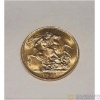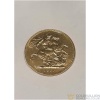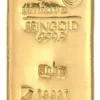Understanding the Price of 1 oz Gold Bar and Its Significance

Gold has been a precious metal with a rich history dating back to ancient civilizations. It has served as a form of currency, played a role in the global economy through the gold standard, and continues to be a valuable asset for investors. The price of a 1 oz gold bar is influenced by various factors such as supply and demand dynamics, inflation, geopolitical factors, and central bank policies. Understanding the gold market is essential for investors, as it offers diversification, wealth preservation, liquidity, and a store of value. In this article, we will explore the significance of 1 oz gold bars and their price in the market.
Key Takeaways
- The price of 1 oz gold bar is affected by supply and demand dynamics, inflation, geopolitical factors, and central bank policies.
- Gold serves as a diversification tool in investment portfolios, providing stability and a hedge against economic uncertainty.
- Different forms of gold investments include physical gold bars, gold futures and options, and gold ETFs and mutual funds.
- 1 oz gold bars offer accessibility, affordability, portability, liquidity, and serve as a store of value and wealth preservation.
- Investing in 1 oz gold bars helps manage risk and provides a means of diversifying one’s investment portfolio.
The History of Gold as a Precious Metal

Gold’s Role in Ancient Civilizations
Gold has played a significant role in ancient civilizations, spanning across different cultures and continents. It was highly valued for its rarity, beauty, and durability. The ancient Egyptians, for example, believed that gold was the flesh of the gods and used it to adorn their temples and tombs. In ancient Rome, gold was a symbol of wealth and power, often used to create intricate jewellery and coins. Gold’s allure and symbolism extended beyond its practical uses, making it a symbol of prestige and status in many ancient societies.
Gold as a Currency Throughout History
Gold has played a significant role as a currency throughout history. It has been used as a medium of exchange, a store of value, and a unit of account. The durability and scarcity of gold have made it a desirable form of money. Gold is valuable for its finite supply, acceptance as a form of money worldwide, ability to hold its value over time, and use as a sovereign reserve. It is recommended for investors to hold a portion of their assets in gold.
Gold bullion is traditionally seen as an insurance policy during economic, financial, and even social uncertainty. When paper currencies lose value, gold tends to appreciate, making it a valuable addition to a diversified investment portfolio. Collectors are also drawn to gold bullion for its beauty and historical significance. Many mints produce limited-edition bullion coins and bars that feature intricate designs and commemorate important events.
The Gold Standard and Its Impact on the Economy
The gold standard refers to a monetary system where a country’s currency is directly linked to gold. Under the gold standard, each unit of currency is convertible into a fixed amount of gold. This system was widely used in the 19th and early 20th centuries, providing stability and confidence in the economy. However, the gold standard also had its limitations. It restricted the ability of governments to implement monetary policies to stimulate economic growth or combat recessions. The Great Depression in the 1930s led to the abandonment of the gold standard by many countries, as they needed flexibility in monetary policy to address the economic crisis. Today, the gold standard is no longer in use, but its impact on the economy is still significant.
Factors Affecting the Price of 1 oz Gold Bar

Supply and Demand Dynamics
Factors affecting the price of 1 oz gold bars in the UK include supply and demand dynamics, economic conditions, inflation, currency value, and market speculation. Investors should closely monitor these factors and compare premiums when buying gold bars.
Inflation and Economic Uncertainty
Inflation and economic uncertainty are two key factors that significantly affect the price of 1 oz gold bars. Inflation is the general increase in prices of goods and services over time, resulting in the erosion of purchasing power. When there is a high level of inflation, investors often turn to gold as a hedge against inflation and a store of value. The demand for gold increases, driving up its price.
Economic uncertainty refers to the lack of predictability and stability in the economy. During times of economic uncertainty, such as recessions or financial crises, investors seek safe haven assets like gold. The increased demand for gold during these periods leads to higher prices.
To understand the impact of inflation and economic uncertainty on the price of 1 oz gold bars, let’s take a look at some historical data:
| Year | Inflation Rate (%) | Gold Price Increase (%) |
|---|---|---|
| 2010 | 1.5 | 10 |
| 2015 | 0.7 | 5 |
| 2020 | 2.3 | 20 |
As shown in the table, there is a positive correlation between inflation rates and the increase in gold prices. During years with higher inflation rates, the price of gold tends to rise more significantly. Similarly, during periods of economic uncertainty, the price of gold tends to increase as investors flock to safe haven assets.
Geopolitical Factors
Geopolitical factors play a significant role in influencing the price of 1 oz gold bar. Political instability and conflicts in major gold-producing regions can disrupt the supply chain and lead to a decrease in gold production. This can result in a decrease in the overall supply of gold, driving up its price. Additionally, trade tensions and economic sanctions between countries can impact the demand for gold as a safe haven asset. Investors often turn to gold during times of geopolitical uncertainty, which can drive up the demand and subsequently the price of 1 oz gold bar.
Central Bank Policies
Central bank policies play a significant role in influencing the price of 1 oz gold bars. The actions and decisions of central banks can have a direct impact on the supply and demand dynamics of gold. For example, when central banks increase their gold reserves, it creates a higher demand for gold and can drive up its price. On the other hand, if central banks decide to sell their gold reserves, it can lead to an increase in the supply of gold and potentially lower its price.
Additionally, central bank policies related to interest rates and monetary stimulus can also affect the price of gold. When central banks implement expansionary monetary policies, such as lowering interest rates or engaging in quantitative easing, it can lead to inflationary concerns and economic uncertainty. In such situations, investors often turn to gold as a safe haven asset, which can drive up its price.
It is important for investors to closely monitor central bank policies and their potential impact on the price of 1 oz gold bars. By staying informed about the actions and decisions of central banks, investors can make more informed investment decisions in the gold market.
Understanding the Gold Market

The Role of Gold in Investment Portfolios
Gold plays a crucial role in investment portfolios due to its unique characteristics and potential benefits. One of the key advantages of including gold in a portfolio is its ability to act as a defensive store of value. Investors often turn to gold during times of economic uncertainty or when they perceive threats to the economy. This defensive nature of gold helps to protect the overall portfolio from volatility and potential losses.
Another important aspect of gold is its potential for diversification. Gold is generally not highly correlated to other assets such as stocks and bonds, meaning it can help reduce the overall volatility of a portfolio. By diversifying with gold, investors can potentially improve the risk-return profile of their investments.
Furthermore, gold has a proven track record for returns, liquidity, and low correlations, making it an effective diversifier. Gold has outperformed stocks and bonds over certain periods, although it doesn’t always beat them in terms of returns. Additionally, certain gold-based assets like ETFs offer high liquidity, allowing investors to easily convert them to cash when needed.
It’s important to note that while gold offers these potential advantages, it’s not without risks and drawbacks. The timing of purchasing gold can be challenging as it doesn’t produce cash flow on its own. Additionally, the performance of gold can be influenced by various factors such as geopolitical events, inflation, and central bank policies. Therefore, investors should carefully consider their investment goals and risk tolerance before including gold in their portfolios.
Different Forms of Gold Investments
When it comes to owning gold, there are several different forms of investments to consider. Each form has its own advantages and risks. Here are five different ways to own gold:
-
Gold bullion: This is one of the more emotionally satisfying ways to own gold. You can purchase gold bars or coins and physically hold them. However, owning physical gold also comes with drawbacks, such as the need to safeguard and insure it.
-
Gold mining shares: Investing in gold mining shares allows you to profit not only from the rising price of gold but also from the business increasing its earnings.
-
Gold ETFs: Gold exchange-traded funds (ETFs) are investment funds that track the price of gold. They offer a convenient way to invest in gold without the need for physical ownership.
-
Gold futures: Gold futures contracts allow investors to speculate on the future price of gold. These contracts are traded on commodity exchanges.
-
Physical gold coins: Similar to gold bullion, owning physical gold coins allows you to physically hold the gold. However, like gold bullion, it also comes with the need to safeguard and insure the coins.
Gold Futures and Options
Gold futures are a popular investment tool for speculating on the price of gold. Investors can use futures contracts to bet on whether the price of gold will rise or fall in the future. One advantage of using futures is the ability to leverage your investment, allowing you to control a larger amount of gold with a smaller upfront investment. However, it’s important to note that futures trading can be complex and risky, and it’s recommended for sophisticated investors who understand the market dynamics.
If you prefer a more accessible and less risky way to invest in gold, you can consider buying exchange-traded funds (ETFs) that track the price of gold. ETFs offer the convenience of trading on the stock exchange and provide exposure to the price movements of gold without the need for physical ownership. Some popular gold ETFs include SPDR Gold Shares (GLD), iShares Gold Trust (IAU), and abrdn Physical Gold Shares ETF (SGOL). These ETFs aim to replicate the performance of gold minus the expense ratio, making them a cost-effective option for investors.
Gold ETFs and Mutual Funds
Gold ETFs and mutual funds are popular investment vehicles for individuals looking to gain exposure to the price of gold without owning physical gold or dealing with the fast pace and margin requirements of the futures market. These investment options provide investors with the opportunity to participate in the potential upside of gold prices while also offering liquidity and convenience.
One advantage of investing in gold ETFs and mutual funds is the ease of trading and exchangeability for cash. Unlike physical gold, which may require finding a buyer and incurring transaction costs, ETFs and mutual funds can be traded on any day the market is open for the prevailing price, similar to selling a stock. This makes them a more liquid option for investors.
Additionally, gold ETFs and mutual funds aim to track the price performance of gold, allowing investors to benefit from price movements. They provide exposure to the price of gold without the need to directly own and store physical gold.
However, it’s important to note that investing in gold ETFs and mutual funds carries risks. The performance of these investment vehicles is tied to the price of gold, so if the price of gold rises or falls, the fund’s performance should reflect that. Investors should carefully consider their investment goals and risk tolerance before investing in gold ETFs and mutual funds.
The Significance of 1 oz Gold Bar

Accessibility and Affordability
When considering the price of a 1 oz gold bar, accessibility and affordability are important factors to consider. Gold bars are available in various sizes, but the 1 oz bar is a popular choice for both investors and collectors. It offers a balance between affordability and value, making it accessible to a wide range of individuals.
Affordability: The price of a 1 oz gold bar is influenced by several factors, including the current market price of gold, manufacturing costs, and any additional premiums charged by the seller. It is important to compare prices from different sources to ensure you are getting the best deal.
Accessibility: 1 oz gold bars are widely available from reputable bullion dealers, online platforms, and even some banks. This accessibility makes it easier for individuals to purchase and own a tangible asset like gold.
In summary, the 1 oz gold bar offers a balance between affordability and accessibility, making it an attractive option for those looking to invest in gold.
Portability and Liquidity
Portability and liquidity are two key factors that make 1 oz gold bars an attractive investment option. Portability refers to the ease with which gold bars can be transported and stored. Due to their compact size and standardised weight, 1 oz gold bars can be easily carried and stored in a secure manner. This makes them a convenient choice for investors who value mobility and flexibility.
On the other hand, liquidity refers to the ease with which gold bars can be converted into cash. 1 oz gold bars are highly liquid assets that can be readily sold or traded in the market. This provides investors with the ability to quickly access funds when needed or take advantage of investment opportunities.
In addition to their portability and liquidity, 1 oz gold bars offer several benefits for investors. They serve as a store of value and wealth preservation tool, protecting against inflation and economic uncertainty. Gold bars also provide diversification and risk management benefits, as they have a low correlation with other asset classes. Overall, 1 oz gold bars are a versatile investment option that combines portability, liquidity, and a range of financial advantages.
Store of Value and Wealth Preservation
Gold has long been recognised as a store of value and a means of wealth preservation. During times of financial instability, such as economic downturns or inflationary periods, gold has historically maintained its value and even experienced appreciation. This makes it an attractive option for investors looking to protect their wealth.
One of the key advantages of gold as a store of value is its tangible nature. Unlike many financial assets, gold is a physical asset that can be physically held and stored. This characteristic appeals to those who prefer to have a physical representation of their wealth.
In addition to its role as a store of value, gold also serves as a hedge against inflation and economic uncertainty. When paper currencies lose value, gold tends to appreciate, making it a valuable addition to a diversified investment portfolio.
To further understand the significance of gold as a store of value and wealth preservation, let’s take a look at the following table:
| Store of Value and Wealth Preservation |
|---|
| Gold maintains value during instability |
| Tangible asset that can be physically held and stored |
| Hedge against inflation and economic uncertainty |
| Diversification tool for investment portfolios |
In summary, gold’s role as a store of value and wealth preservation is supported by its historical performance, tangible nature, and ability to hedge against inflation and economic uncertainty. By including gold in their investment portfolios, individuals can protect their wealth and potentially enhance long-term returns.
Diversification and Risk Management
Investors can diversify their portfolios and protect against inflation by including 1 oz gold bars. Factors to consider when buying include purity, reputation of the seller, storage and insurance, and price and premium.
Conclusion
In conclusion, the price of a 1 oz gold bar is determined by its size, purity, and the current spot price of gold. The weight of gold bars can vary widely, ranging from a few grammes to several kilogrammes. The most common weight denomination for gold bars is 1 ounce. There are significant price discrepancies between different gold bars, so it’s important to find the best deal available. The value of a gold bar also depends on its verification of authenticity. Understanding the significance of the Troy ounce is crucial in the bullion market, as it is the standard unit of measurement for precious metals. Overall, investing in gold bars can be a lucrative venture, but it’s important to consider all the factors that affect their price.
Frequently Asked Questions
What factors contribute to the price of a 1 oz gold bar?
The price of a 1 oz gold bar is influenced by factors such as supply and demand dynamics, inflation and economic uncertainty, geopolitical factors, and central bank policies.
What are the different forms of gold investments?
Gold can be invested in various forms, including physical gold bars and coins, gold futures and options, and gold ETFs and mutual funds.
Why is a 1 oz gold bar significant?
A 1 oz gold bar is significant due to its accessibility and affordability, portability and liquidity, store of value and wealth preservation, and its role in diversification and risk management.
How much is a 1 oz gold bar worth?
The value of a 1 oz gold bar depends on factors such as its size, purity, and the current spot price of gold.
What is the significance of the Troy ounce in the gold market?
The Troy ounce is a unit of weight used for precious metals like gold and silver. It is commonly used to measure and price gold bars and coins.
What is the historical price movement of gold?
Gold has experienced significant price movements over time, influenced by various factors such as economic conditions, inflation, and investor sentiment.










